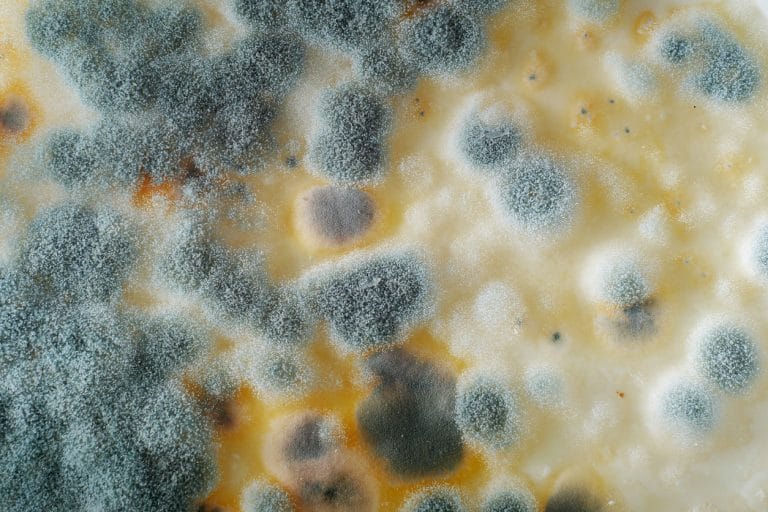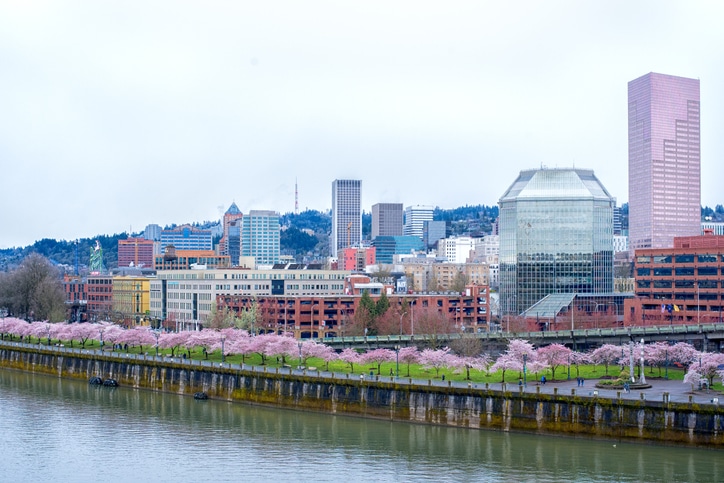Test for Portland Mold, Home Inspection Tips

An unmistakably mold-stained wall, ceiling, or shower stall ranks among the least appealing sights in any home, let alone one you’re shopping on the red-hot Portland real estate market. Today, we’re going to take a look at how to identify and test for mold, how to clean it up, and how to hopefully mitigate some of the specific root causes of the issue to prevent future growth — all in the interest of safeguarding your well-being and presenting your home for sale in the best possible light!
Introducing Portland Mold
Molds refer to a widespread and incredibly diverse group of fungi that comprises anywhere from tens to hundreds of thousands of species. We tend to have a negative connotation of mold, but it’s important to note that these organisms perform vital decomposition services the world over, so we’ve actually got an awful lot to thank this fungal squad for.
Molds can grow indoors and out on a wide variety of surfaces and reproduce by hardy spores that can disperse widely and persist for long periods in environments unfavorable for mold growth. Mold spores (and molds) are in your home and just about everywhere; a mold-free domicile is not a reality you can achieve, but you certainly can take steps to treat and ward off the rampant mold growth that leads to visible buildup and the potential health issues associated with it.
Mold Growth in Portland Homes
Molds require moisture for growth, favoring wet and humid microclimates. Persistently damp areas in a home can, therefore, foster mold. Here in Portland, we’ve obviously got a climate on the moist side of the spectrum, which means indoor mold is a common problem.
Some newer homes are so well-insulated that a lack of ventilation can promote mold growth. Older, draftier homes, meanwhile, may suffer from mold due to leaks, bathroom ventilation into attic spaces, and other issues. It goes without saying that homes that have experienced flooding or other forms of significant water damage are especially vulnerable to mold infestation.
Among the most common mold genera inside buildings are Cladosporium, Aspergillus, and Penicillium. So-called black mold or toxic black mold, Stachybotrys chartarum (or S. atra), sometimes gains a foothold indoors on material with high cellulose content and lots of persistent moisture, such as water-damaged wallpaper, fiberboard, or drywall.
Health Problems Associated with Mold
Household mold buildup can cause health and quality-of-life issues. It can trigger allergic reactions such as itchy eyes and a stuffy nose, for example, and exacerbate asthma symptoms. People with compromised immune systems, chronic respiratory impairments, and other existing health problems may be more vulnerable to adverse effects from mold buildup.
Mold Damage to Homes
Not only can mold cause health issues, but if left untreated, it can pose a structural hazard to your home. Since mold is a critical part of the cycle of decay, it breaks down objects and can lead to rotting support beams, decaying walls, and other potentially deadly house hazards. The best way to avoid mold damage in your home is to control sources of potential water leakage. Some of the most common areas for moisture accumulation (and, thus, mold to grow) include:
- Leaking roofs
- Plumbing leaks indoors
- Drainage problems outside
- Damp crawl spaces and basements
- Bathroom or kitchen steam
- Cool surface condensation
- Humidifiers
- Wet clothes drying inside
- Improper clothes dryer ventilation
- Improper or poor heating and cooking appliance ventilation
You should also routinely check areas with high water exposure for mold, such as your bathroom, kitchen, shower, sinks, under the sink, and around windows. These areas are exposed to high moisture levels and, as such, can become a breeding ground for more mold. Thankfully, routine cleaning of these more common mold growth spots can be enough to prevent future mold issues in your home.
One of the biggest risks for growing mold is home flooding. If your home has flooded or you had a pipe burst, you may be at risk for mold growth. One of the best ways to prevent this is to deal with the water from flooding as soon as possible. You can hire a professional service to deal with the flooding or remove the water using a shop vacuum, dehumidifiers, and other drying techniques. If left to stand too long, water can damage your carpets, walls, and other areas of your home and lead to mold issues down the road.
Remember, a pound of prevention is worth an ounce of cure, so ensure your home remains dry and mold-free throughout the year. Be sure to install dehumidifiers in areas prone to high moisture and clean spaces in your home frequently. Even with dehumidifiers, it is important to check areas of your home for mold often, including spaces you would not usually go into.
Catching mold early can significantly reduce the damage done to your home and help you offset some of the future repair costs of replacing mold-damaged furniture and items. If you suspect crucial infrastructure in your home has been weakened by mold, you should call a professional for an inspection. Taking mold damage seriously is crucial for the long-term health of your home and to avoid costly repairs down the line should your home become structurally compromised.
Identifying a Portland Mold Problem
The blackish, brownish, blueish, or greenish speckles or patches of significant mold growth on walls, floors, ceilings, roofs, bathroom fixtures, and the like are obviously the most blatant signs of a mold problem in a home. Even if you haven’t yet visually registered mold buildup, you’ll often be keyed into it by a musty scent. You may also be experiencing some of the above-mentioned allergic/respiratory symptoms, which should also be considered potential evidence of problematic mold levels somewhere.
In Portland, the number-one mold zone in homes is typically the attic. Mold commonly accumulates around leaky windows, pipes, gutters, and fixtures. It can also build up in out-of-the-way places such as ductwork, wall interiors, flooring, or underlayment beneath carpeting.
While we often use the word mildew synonymously with mold, mildews are actually a separate variety of fungi that can generally be distinguished from true mold by their primarily white appearance.
If you’re having trouble detecting suspected mold, you may opt to hire a professional mold-testing/inspection service. There are many such companies in the Portland area. Aside from thorough visual surveys of your home, specialists may also conduct air-quality and moisture tests during a Portland mold inspection to determine the extent of your potential mold problem and take samples to identify, if possible, the type of fungus present.
It’s worth noting that the federal government hasn’t established any standard for levels of mold or mold spores. Whether you do it yourself or hire a professional, simply locating visible mold growth is sufficient to identify a problem and warrant cleanup and remediation.
Portland Mold Cleanup and Remediation
The Environmental Protection Agency suggests that mold cleanup under 10 square feet in area is usually easily done by yourself. It may be worth seeking professional cleaning by contractors or companies familiar with mold for buildups to a greater extent.
Scrub mold off hard surfaces using a cloth and a mixture of detergent or vinegar and water. The EPA recommends wearing goggles, gloves, and an N95 respirator for the task to limit your exposure to mold spores.
More absorbent surfaces that have accumulated molds, such as ceiling tiles and carpeting, may simply need to be replaced.
Besides cleaning up mold patches, it’s important to try to diagnose the underlying cause of mold growth. Reducing indoor moisture is an important step to take if you’ve experienced a mold issue, though in some cases, the realities of Portland’s climate may limit your options. Definitely, though, identify and repair any leaks, and use ventilation/exhaust fans, dehumidifiers, air conditioners, and other tools to ward against excess moisture whenever possible.
Tackle Mold Before Selling Your Portland Home
It’s hopefully stating the obvious to say that potential buyers are likely to balk at significant mold issues: Besides the unappealing look and odor, they’ll likely interpret them as red flags suggesting underlying leakage or structural problems. As you work with a Portland real estate agent to prepare your property for the market, identifying and remedying any significant mold problems should be a top priority.


